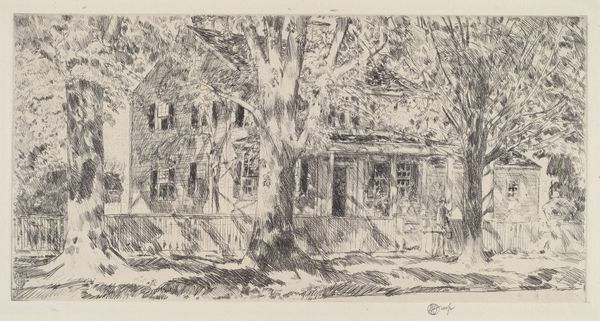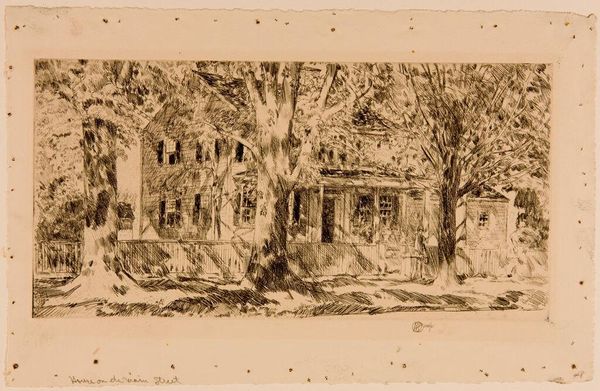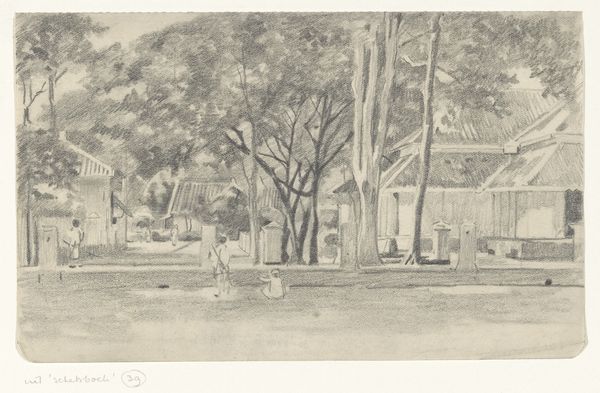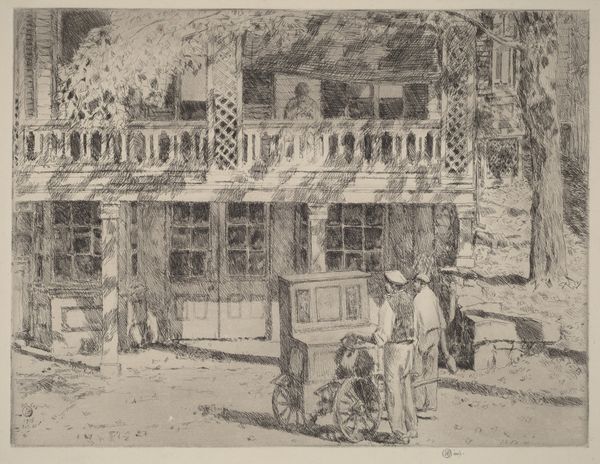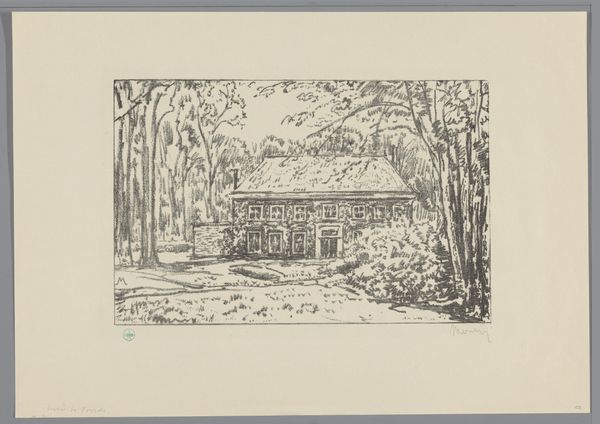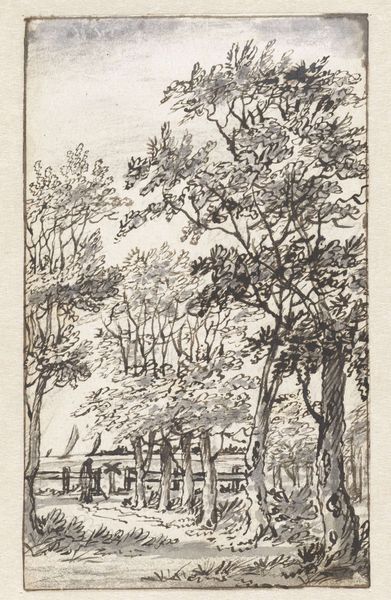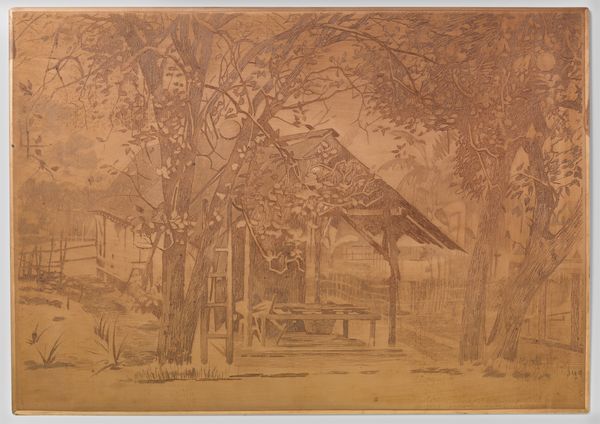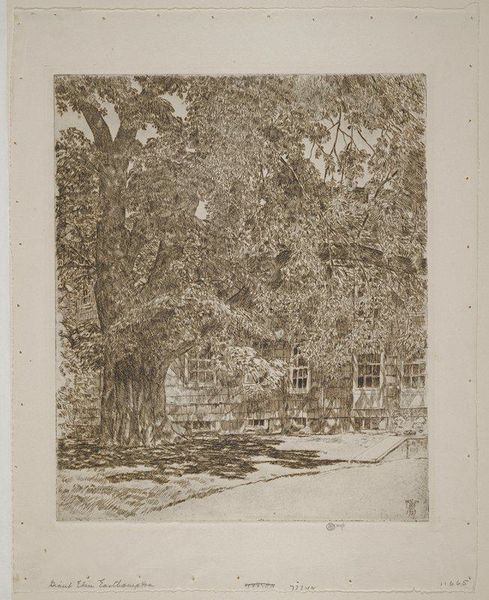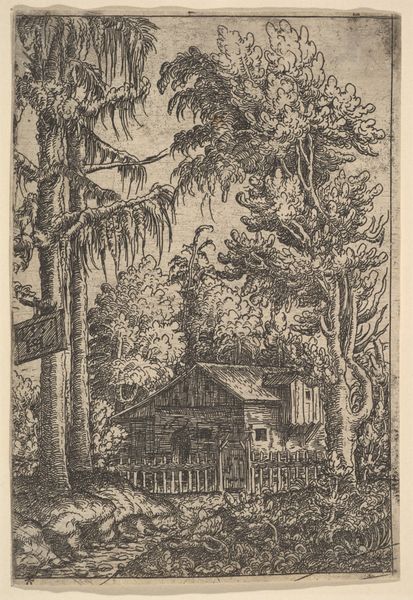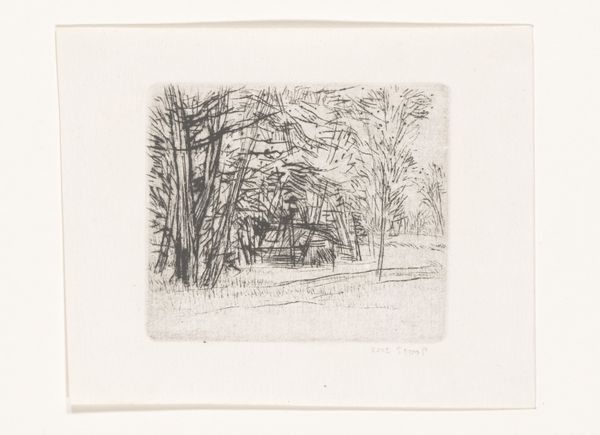
print, etching
# print
#
impressionism
#
etching
#
landscape
#
house
#
cityscape
Copyright: Public domain
Childe Hassam made this etching of The Lion Gardiner House in East Hampton in 1919. What strikes me about this image is the way the house is nearly swallowed by the surrounding trees. It’s as if nature is reclaiming this symbol of colonial settlement. Hassam was a member of the Old Lyme Art Colony, a group of American Impressionist painters. His work often depicted scenes of upper-middle-class life. Here he shows the home of Lion Gardiner, an English colonist who was granted land in 1639. By the time Hassam made this print, Gardiner's house was a potent symbol of East Hampton’s long history. We see the house partially obscured by trees; an ambivalent symbol. On the one hand it memorializes the home. On the other hand, it represents a colonial past and the power structures of the time, which may be why the artist is so ambiguous in its representation. As historians, we can look to town records and historical accounts to understand the place of the Gardiner family in the social and political life of East Hampton, and to consider how the image operates as a commentary on the complex legacy of colonialism in America.
Comments
No comments
Be the first to comment and join the conversation on the ultimate creative platform.
